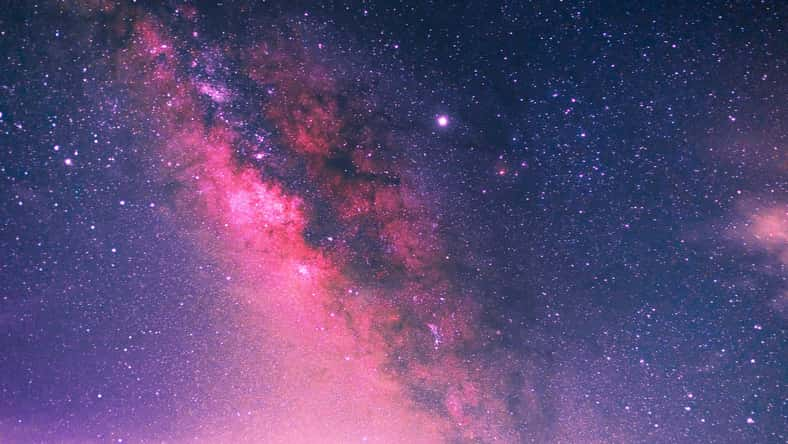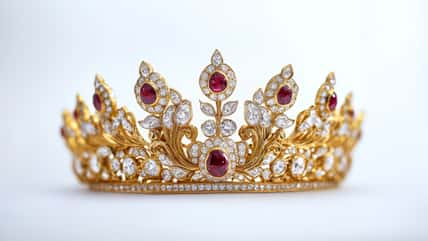She Was A Brilliant Astronomer Who Discovered That Hydrogen Is The Most Abundant Element In Our Universe And Debunked The Theory That Stars Are Made Up Of The Same Elemental Components As Earth

If you’re a fan of astronomy or have a great appreciation for the stars in the sky, you should know who Cecilia Payne is. Thanks to Cecilia, we know what stars are made out of.
Cecilia was one of the most brilliant astronomers of her time and taught the world what stars were composed of and the importance of hydrogen in her 1925 Ph.D. thesis.
Cecilia was born in Wendover, England, in 1900. She was interested in science at a young age, and her mother enrolled her in St Paul’s School for Girls in London to learn more about the subject.
In 1919, she received a scholarship for Newnham College at the University of Cambridge, where she wanted to continue studying science, but she was unsure what kind.
Then, that same year, Cecilia attended a lecture by astronomer Arthur Eddington, who talked about his experience observing that year’s solar eclipse. Fascinated by the lecture, she realized she wanted to study physics.
Later, at an event at the Cambridge Observatory, she introduced herself to Arthur and told him about her desire to become an astronomer.
He gave her access to the observatory’s library, full of astronomical journals and texts she hadn’t read yet.
Unfortunately, Cecilia realized that as a woman trying to advance her science career, England was not the best place to be, as the country was still quite behind in the times.
She decided to move to America in 1923, where she could start working as a graduate student research fellow at the Harvard College Observatory.

Photo 154617035 © Sarawoot Sumalee – Dreamstime.com – illustrative purposes only
Cecilia worked alongside a group of women at the observatory known as the Harvard Computers, who analyzed all the data the observatory collected.
They were known for being more patient and better at working on fine details than men but still received a lower salary.
Before Cecilia’s graduate work at Harvard, astronomers believed that stars were made up of the same elemental components as the Earth.
However, while working on her Ph.D. thesis, she discovered that hydrogen and helium were much more abundant in stars, debunking that theory.
Through this work, she also made the discovery that hydrogen is the most abundant element in the universe.
Cecilia published her work in her thesis, “Stellar Atmospheres: A Contribution to the Observational Study of High Temperature in the Reversing Layers of Stars,” and received her Ph.D. in astronomy from Harvard University in 1925.
Although the director of the Princeton Observatory, Henry Russell, attempted to take credit for some of her findings in his 1929 publishing, Cecilia’s work and thesis were still highly praised by fellow science community members. Her work was printed and distributed as a monograph, which sold hundreds of copies.
After receiving her doctorate, Cecilia studied the Milky Way and stars of high luminosity. In 1930, she began publishing books, her first being “Stars of High Luminosity.”
In 1933, Cecilia met Russian-born astrophysicist Sergei I. Gaposchkin while traveling in Europe. After getting him a visa to the United States, they married one year later and changed her last name to Payne-Gaposchkin. They had three children together.
Cecilia worked a series of low-paying research jobs after receiving her doctorate, although she really wanted to teach as a professor at Harvard. Unfortunately, women were barred from becoming Harvard professors at the time.
It wasn’t until 1956, after astronomer Donald Menzel became the director of the Harvard College Observatory, that Cecilia was able to be appointed a professor at Harvard’s Faculty of Arts and Sciences.
Her position at Harvard continued to advance over the years, and she became the first woman to head a department at Harvard when she was appointed Chair of the Department of Astronomy.
Cecilia retired from teaching in 1966 but continued researching as a staff member at the Smithsonian Astrophysical Observatory. She also edited journals and books published by the Harvard Observatory for ten years.
In 1976, Cecilia was awarded the prestigious Henry Norris Russell Prize by the American Astronomical Society. She passed away three years later at her home in Cambridge, Massachusetts, at 79.
Not only were Cecilia’s findings and discoveries imperative to the science community and what we know about the universe today, but her career was also a turning point for women in STEM and brought women scientists the recognition they deserved.
If true crime defines your free time, this is for you: join Chip Chick’s True Crime Tribe
She’s No Longer Helping Her Boyfriend Plan A Trip For Them To Go To Tokyo After He Ate Her Cookies
These Six Home Design Trends Will Be Hot In The New Year, According To A Recent Zillow Report
Sign up for Chip Chick’s newsletter and get stories like this delivered to your inbox.
More About:Chicks We Love





